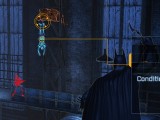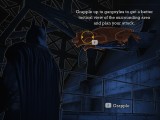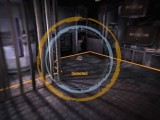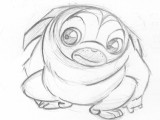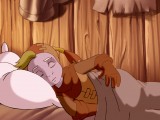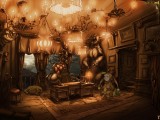Note: This is Day 5 of “The Whispered World Week” at The Slowdown, and wraps up our coverage on the game and its creator for the time being. Big thanks for reading, and let us know what you thought in the comments section!
The Whispered World is finally out today in most of Europe. North American fans will have to wait a little longer still, as Viva Media pushes the game out the door next Monday. We hope this week’s coverage of the game has been informative and that you will all be able to enjoy the game to its fullest when you finally get your hands on it today, on Monday, or later down the road.
As we wrap up with our coverage on the game here at The Slowdown for the time being, I thought it would be pertinent to leave you all with a thought for tomorrow. Below, a piece of concept art for Marco Hüllen’s next personal hobby adventure project, Limbus:
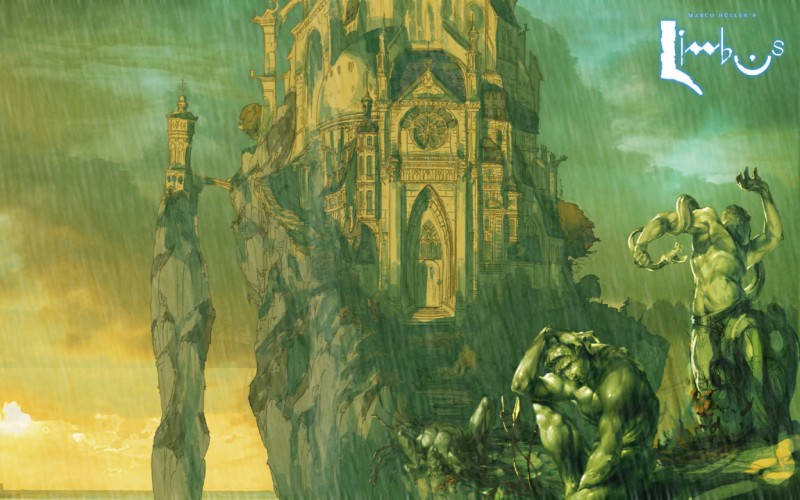 In the promotional image above, the snake-wrapped figure on the right instantaneously recalls the influence of variations of the Hellenistic monumental sculpture, “Laocoön and His Sons.” While Marco confirmed this, he remains tight-lipped on its role and symbolism in the game’s context.
In the promotional image above, the snake-wrapped figure on the right instantaneously recalls the influence of variations of the Hellenistic monumental sculpture, “Laocoön and His Sons.” While Marco confirmed this, he remains tight-lipped on its role and symbolism in the game’s context.
“Limbus,” then, refers to boundaries, borders and edges - all present in the image above, whether in the steepness of the cliff, the bridge, or the sea below. Additionally, since the third statue lies wounded in the back of the foreground, and each these characters are clearly in various types of torment, this all points our attention towards the Roman Catholic concept of the Limbo, which also ties in with the Roman-style architecture of the image.
Above, a series of character sketches from the game (including Aurora and Nicodemus, two of the three lead characters, and Nox). A translation of Hüllen’s official storyline for the game is as follows:
Limbus is set in a fictional future in which the world has been in chaos for many years, as people have suddenly begun to remember their past lives. As people are no longer afraid of death, they go about living their lives light-heartedly. Crimes are abound, wars raging and nothing can prevent the madness of mankind.
But then the Triplets are born. They alone can not remember their past lives, and their task will be to end the madness of the world.
The player assumes the role of the triplets Aurora, Nicodemus and Orlando, who must return to the villa of their childhood, to uncover the mystery of their lives and the entire mankind. The three are pursued by a secret sect, who eventually will have something to do with their secret.
During the story the three will have to visit crazy places like the city of the children and the city of the elderly, and meet many crazy characters, like the child Linus, who has opened a museum of his past lives, as well as creatures such as Nox, who lives in their villa.
In our interview, as inspiration for this forthcoming project, Hüllen cites Jean-Pierre Jeunet’s Amelie and the music of Yann Tiersen. At the moment,while the author admits to currently working on a demo, he is not yet very far in development, and as such not actively looking for publishers yet.
Read More
 Almost exactly two years ago in 2008, on April the 22nd, the recovering Interplay had just sent out a press release announcing a new Earthworm Jim game to be developed in conjunction with an animated series and a feature film, with original author Douglas TenNapel working as a creative consultant on the game.
Almost exactly two years ago in 2008, on April the 22nd, the recovering Interplay had just sent out a press release announcing a new Earthworm Jim game to be developed in conjunction with an animated series and a feature film, with original author Douglas TenNapel working as a creative consultant on the game.